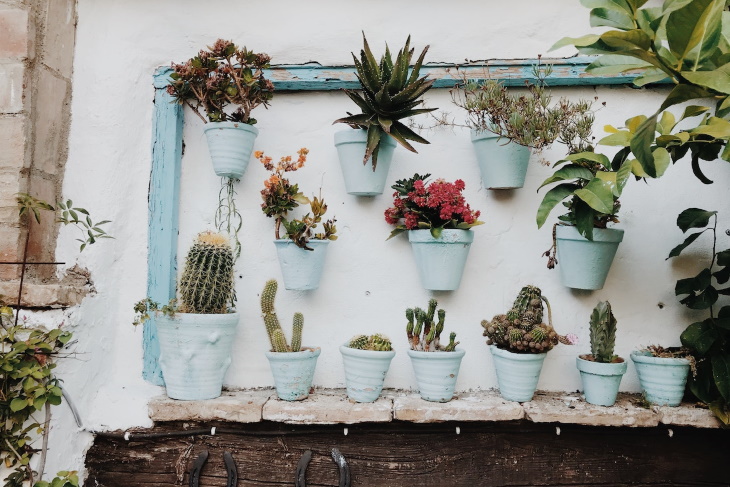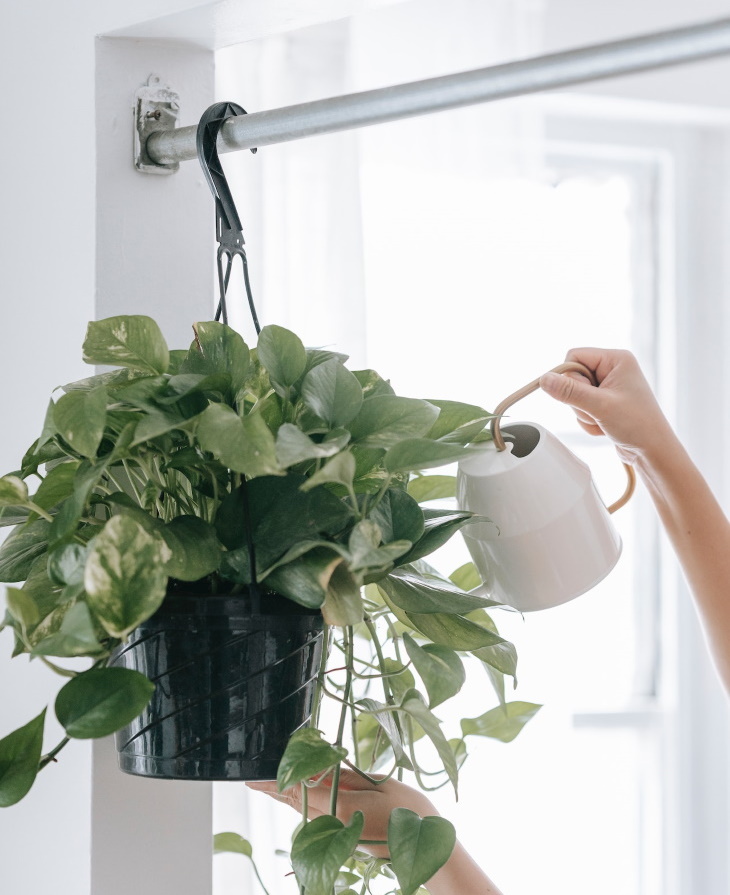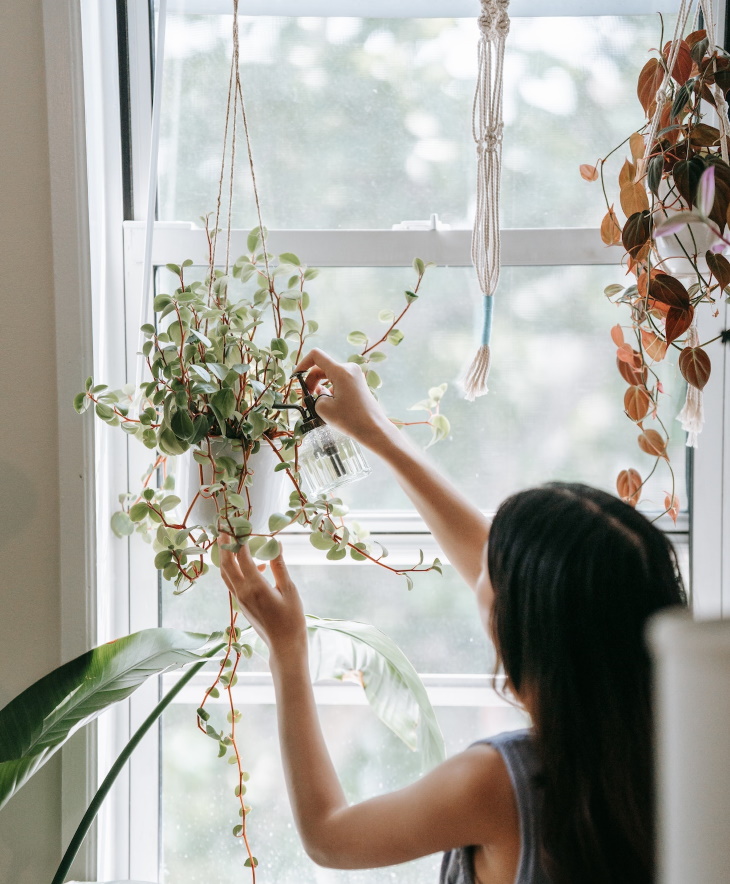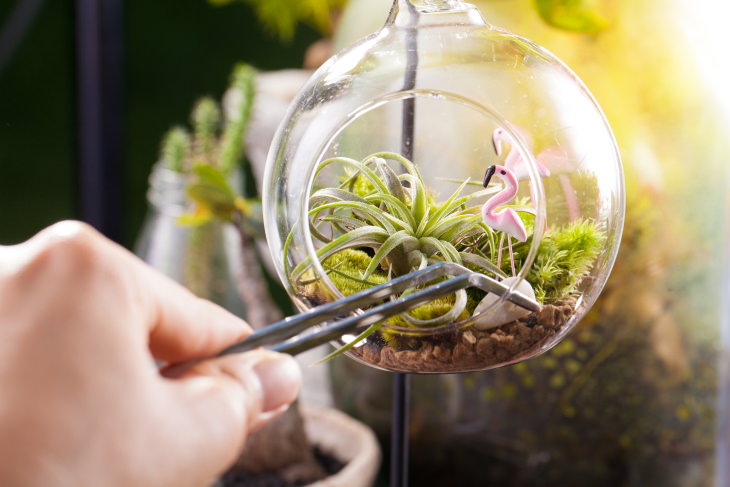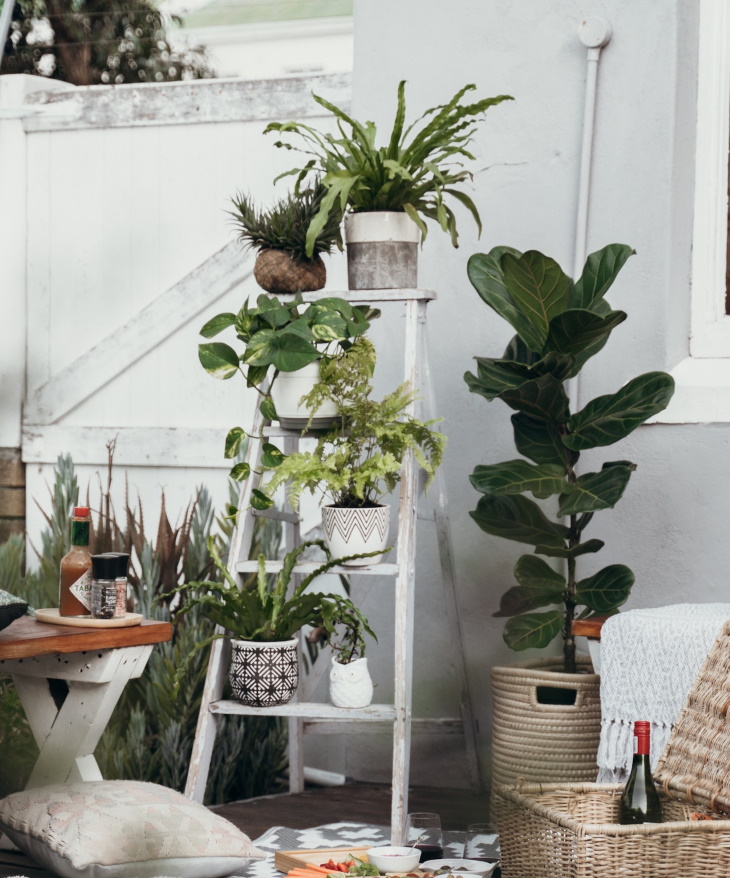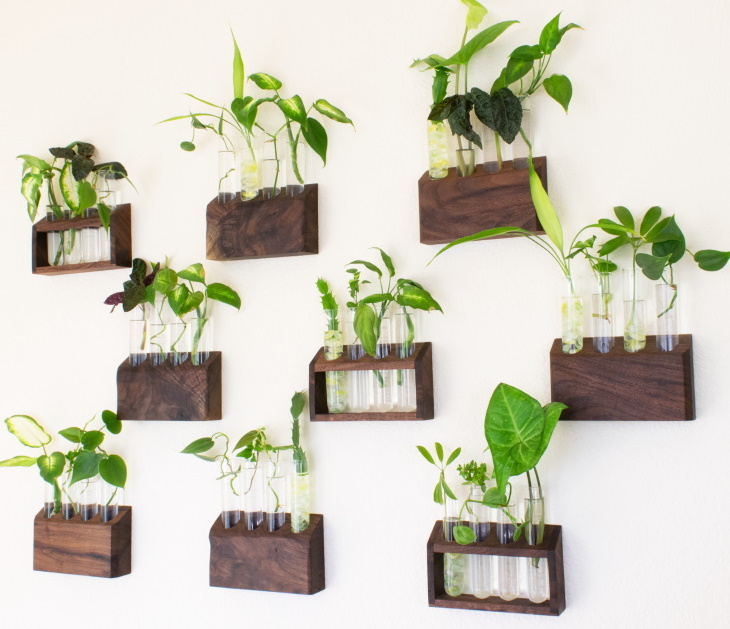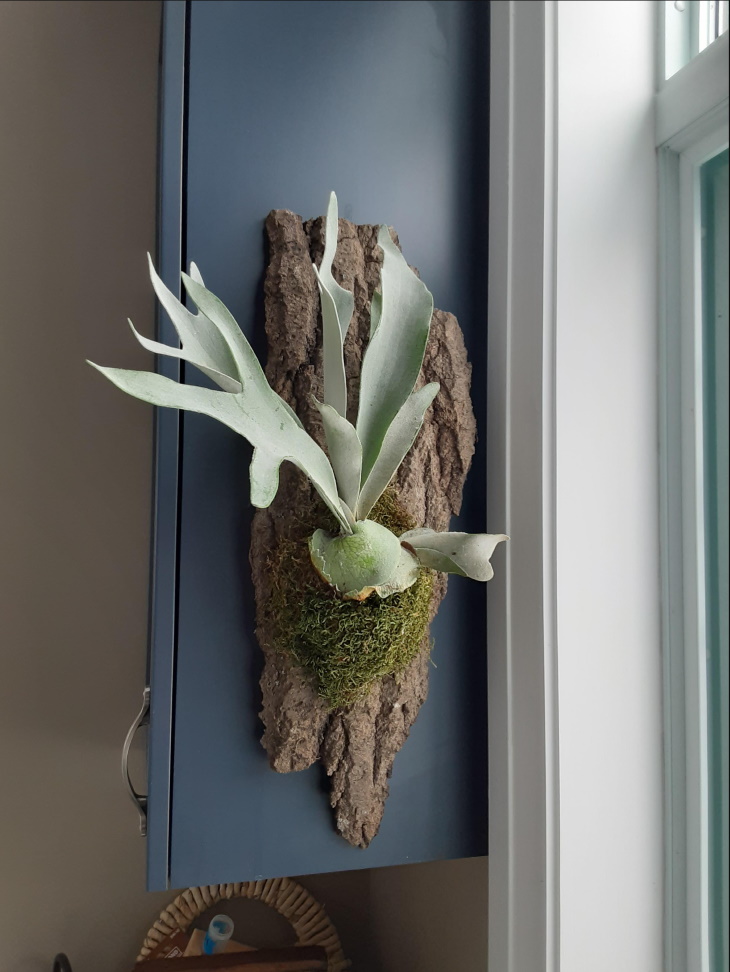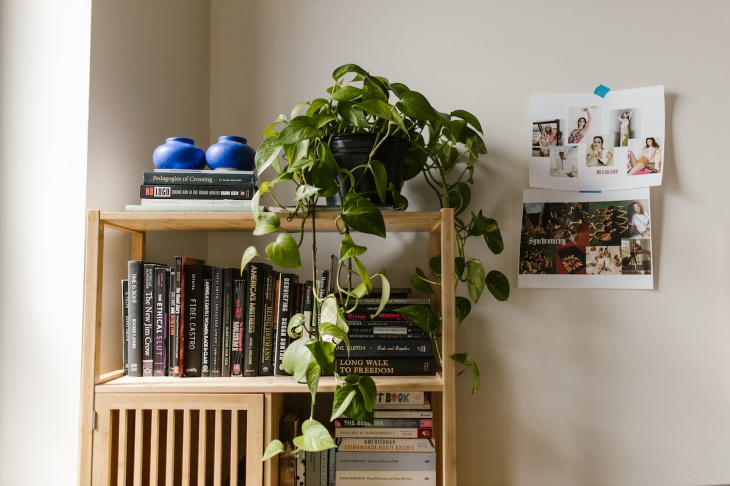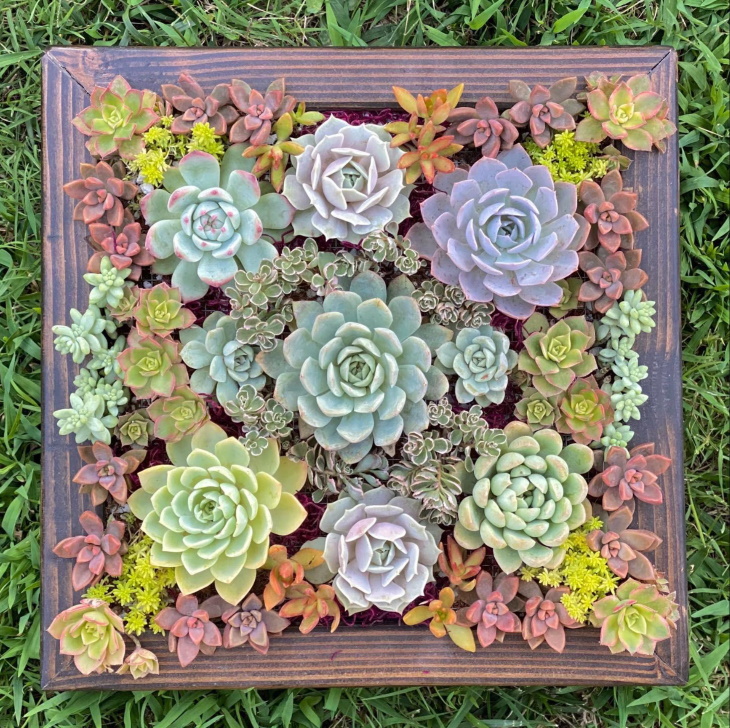1. Wall Planters
Have an easy introduction to a hanging garden with wall-mounted planters. They look like cachepots but with holes or hooks for hanging. The idea is that you place a plant in a nursery pot inside the wall planter. We’d recommend that you remove the plant from the wall planter before watering and wait for an hour for the pot to drain excess water before placing it back into the wall planter.
Plant nurseries and home improvement stores sell a variety of such pots. Just make sure to get a watertight planter to avoid water damage to the wall.
2. Old Curtain Rods
Repurposing old curtain rods or clothing rods is an amazing way to utilize vertical spaces too. No, we’re not suggesting that you hang your plants in the closet. Instead, opt for free-standing racks. The main advantage is the ease of use, as using it for plants requires no drilling in the walls. Simply use one of those S-hooks to hang plants in macrame holders, or opt for a hanging basket or planter.
3. Kokedama
Kokedama is a Japanese technique that involves growing plants in balls of soil surrounded by moss. This method is related to bonsai gardening, and it uses moss and string to secure soil around a plant’s root system in a ball. Since kokedamas use no planters, they are light enough to be suspended from the ceiling with some fishing line tied to a hook.
Watering kokedamas is easy - put them in a basin with water and let the moss ball soak for 10-25 minutes.
4. Living Curtains
Every plant owner will know that a sunny window is the number one spot for growing many sun-loving plants. The problem is that an average windowsill can only fit so many plants, so what should you do with the rest of your plants? We have a solution that will help you save money on curtains use and give your trailing plants the much-needed sunlight.
Place those plants in a macrame plant holder or a hanging basket and hang them directly on the curtain rod instead of the curtain. Just make sure that the curtain rod is sturdy enough to hold the weight of the plants beforehand. And voila, you have a beautiful living curtain that drapes across the window like a green waterfall!
5. Hanging Terrariums
Hanging glass terrariums are a beautiful way to display small succulents or air plants. They look so whimsical and fun! Tillandsia, or air plants, work especially well for hanging terrariums, as they don’t require any soil and are very lightweight on their own, so you don’t have to worry about the construction falling down and breaking into a million pieces.
6. Ladders (and other found objects)
When it comes to vertical plant displays, you can let your creativity roam free and think of all kinds of objects that could fit a planter or two. I personally love repurposing old or found items in my gardening projects, and this picture is a great example of that perfect marriage of creativity and resourcefulness at work. Give me a reason why not to reuse an old ladder as a vertical plant display…
7. Propagation Wall
An empty wall can become your main propagation station. And it doesn’t have to be as complicated as the one in the image above. You can simply hang a single shelf and crowd it with glass containers that you use for propagating cuttings.
8. Wall Mounted Plants
Now, this is one method that will involve a bit more time and effort on your part. It is most commonly used for growing staghorn ferns, but it can also work with orchids, air plants, hoyas, jungle cacti, and many other trailing plants. This method involves securing a ball of soil and moss to a wooden board with some fishing line, and then hanging the board on the wall like you would a painting.
To water the mounted plant, you’ll need to remove the board and water it in a large sink or bathtub.
9. Display Plants on Shelves
Not everyone is ready to spend several hours of their lives tying a staghorn fern to a wooden board. If you’re only now beginning to appreciate houseplants and want to experience the beauty of a beautiful hanging plant without all that extra work and trouble, just place your pothos or ivy on a high shelf and watch it grow vines that reach the floor.
10. Succulent Wall Frames
We left the prettiest project for last! Succulent wall frames are like an alive still life painting, ever-changing and ever-evolving in front of your eyes. This project requires a shallow box lined with wire meshing across the top. The box is filled with light soil and moss as a substrate to secure the succulents.
Succulent wall frames should be located on a wall that receives plenty of bright light. Water by removing the frame and letting it dry completely before hanging the frame back on the wall.

